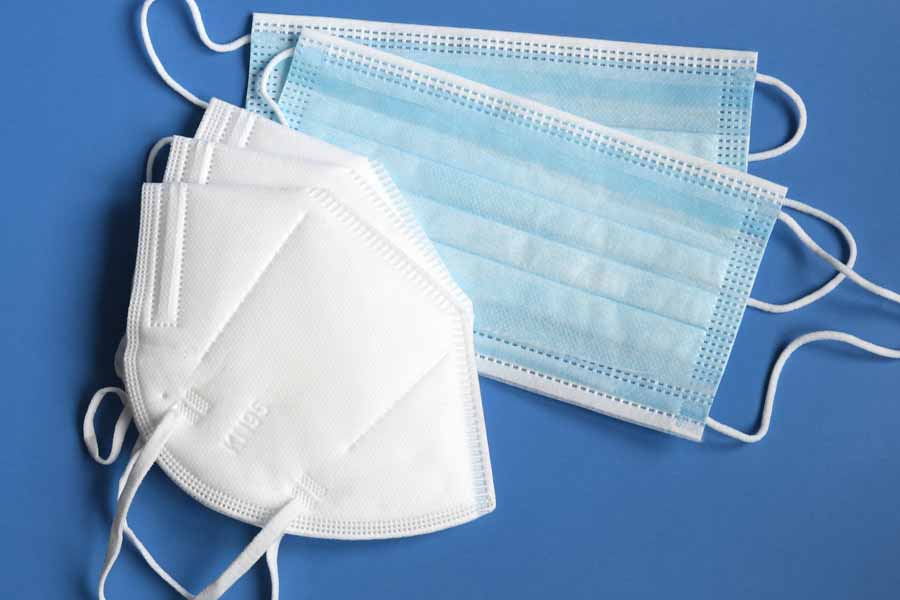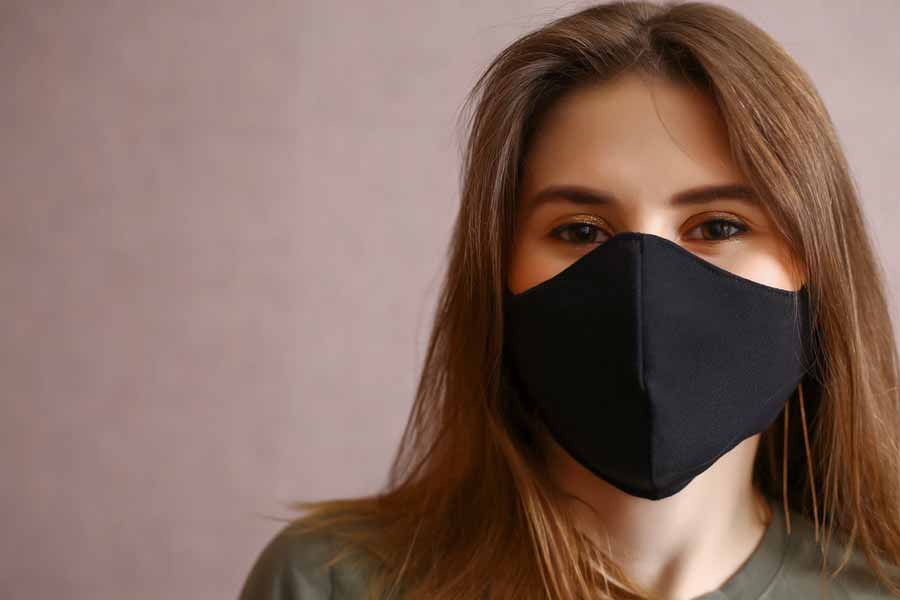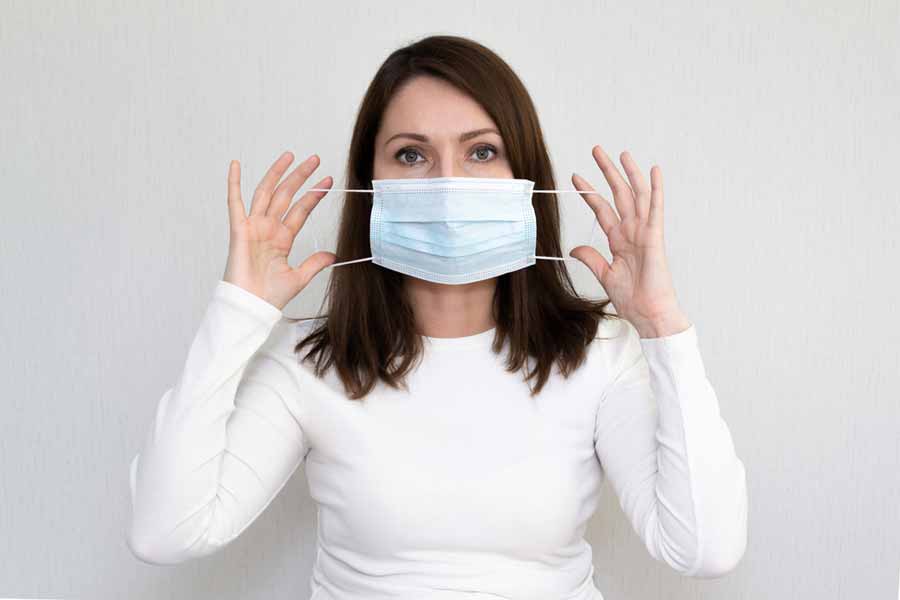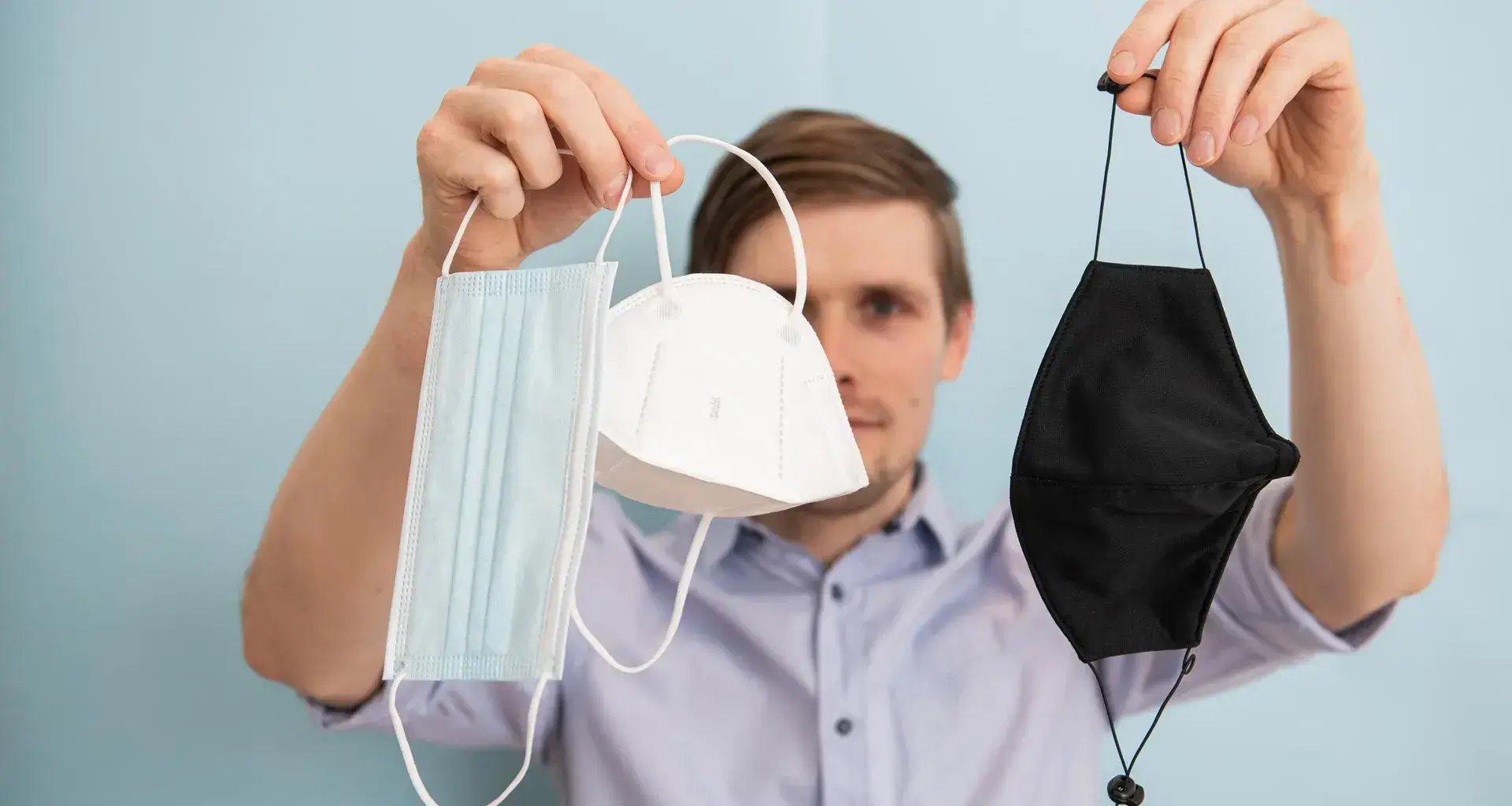Given the high transmissibility of the COVID-19 Omicron variant, health specialists recommend that people wear the best masks they have access to.
SARS-CoV-2 is spread when invisible particles called aerosols and small saliva droplets containing the virus enter through the nose, the mouth, and to a lesser extent the eyes.
Masks are made to block those respiratory droplets spread when people breathe, cough, or sneeze. Depending on their type and use, they provide protection against the virus that causes COVID-19.
Some specialists prefer to call them face masks to include the nose, as well as their filtration capacity, which is essential for protection against aerosols.
Here are the contents of this article:

Should I continue to wear a face mask?
Yes, and more now than ever because of how contagious the COVID-19 Omicron variant is.
The World Health Organization and Mexico’s Department of Health are urging their mandatory use:
- When you need to leave the house
- When you’re in crowded places where you can’t be at least a meter apart
- In rooms with poor or unknown ventilation
- If you have a guest at home where there is no (outdoor) ventilation, or you can’t stay at a safe distance
Who should not wear one?
- People with respiratory problems
- Those who cannot remove one without help
- Children under 2 years old
- When you are outdoors, provided you are at a distance of at least 1.5 meters from other people
What mask should I wear?
n this fourth wave of the pandemic in Mexico, with a highly contagious variant such as Omicron, experts recommend wearing masks with greater protection, such as an N95 or a KN95.
Cloth face masks can still be used only in combination with another, as explained below.
Face masks are classified according to the material they are manufactured from. They can be filtering masks, such as N95, KN95 or FFP2, etc.; surgical masks; and cloth masks.
- N95, KN95, or KF94 face masks are the best options
They have a more precise fit on the nose, plus they have better filtering since they have 5 layers (N95 or KN95) or 4 layers (KF94) of protection.
Why wear N95 or KN95 masks?
They have a high filtration capacity that protects against aerosols or the spread of droplets. Their name means that their 5 layers can filter 95% of all particles in the air when used correctly.

- Surgical masks (the typical medical blue masks): medium protection if they have 3 layers
They are disposable masks known for their use in medical procedures. There are one or several layers of panels or folds and are they are fixed in place with an elastic band around the ears or that goes around the head.
- One-layer face masks: not recommended
These are basically used to protect from dust or environmental pollution. Their ability to protect against COVID-19 is very low.
- 3-layer face masks: medium protection
Their function includes blocking large droplets of particles, spills, aerosols, or sprays, and reducing exposure to saliva and respiratory secretions.
However, they do not create an airtight seal against the skin or filter out very small airborne pathogens. A better option might be combining two 3-layer masks.

- Cloth face masks
They tend to have a medium protection index, depending on the type of material used to manufacture them and the number of layers. There are also masks made from silicone. The recommendation is to always use them together with another mask.
A good cloth face mask should:
1. Fit well over the nose, mouth, and chin.
2. Preferably have a metal nose strip.
3. Block the passage of light through the fabric.

Can I protect myself better if I combine masks? Yes, and here is how:
- Two 3-layer surgical masks ✔️
For greater protection, make sure that each one is a 3-layer mask.
- A 3-layer surgical masks and a cloth mask ✔️
First put on the 3-layer disposable mask and then the cloth mask, preferably made of multi-layered fabric, on top.
- A 3-layer surgical mask and a a 3-layer face mask ✔️
The 3-layer face mask can fulfill the function of a cloth mask.
- Two cloth face masks ❌
The increase in protection varies depending on the type of fabric and shape (if there are gaps) and can make it difficult to breathe. The recommendation is to combine a cloth mask with a surgical mask.
- Combinations of N95 or KN95 5-layer face masks❌
According to the CDC, you should not combine N95 or KN95 masks with any other mask.
Check that they are not fake
Respiratory protection devices must comply with international standards regulated by the National Institute for Occupational Safety and Health (NIOSH).
One of the most important standards is that they must have 5 layers of filter material.
N95 masks must comply with NIOSH and the U.S. FDA (Food and Drug Administration) standards, while KN95 masks must comply with standards from the NAS (China National Accreditation Service for Conformity Assessment) and the FDA.
Original N95 masks must contain the label “NIOSH,” the manufacturer’s name, model, batch number, and TC approval number.
An original KN95 mask must display the manufacturer’s name, model, and quality standard GB2626-2019.
How should I wear and care for a mask? Can I reuse it?
Before you put it on:
- Wash your hands with soap and water before putting it on.
- Check which side is which (the thick seams correspond to the inner part of the mask).
- Place the elastic bands over your face and around your ears, making sure the mask completely covers your nose and mouth. Take care not to touch the inner part with your hands.
While wearing the mask:
- Keep it over the nose and mouth at all times.
- Avoid touching it while wearing it. If you do touch it, wash your hands as soon as possible.
- Change your mask as soon as it gets wet, and change it for a clean, dry one.
How should you remove it?
- Take the elastic bands from the sides and pull them away carefully.
- Remove the mask from behind, using the elastic bands to hold it, without touching the front side. Then wash your hands.
- Put it immediately in a closed container until you wash it if it is made of cloth. If it is disposable mask, immediately put it in a closed container.

Follow these recommendations for correct use:
- Make sure it covers your nose, mouth, and chin.
- If you double-mask, check that the top mask pushes the edges of the bottom one to avoid leaving gaps. Check that it is adjusted correctly.
- Make sure you can see and breathe easily.
- Look for one that has a metal nose strip for a better fit.
- Do not wear one with vent valves or other openings.
- Do not wear it if it makes it difficult for you to breathe.
- People with beards may want to shave or trim their facial hair.
Can I reuse my mask?
Do not wear a mask that is damp or dirty. Discard it if it is a surgical mask. If it is made of cloth, you need to wash it and wait for it to dry.
In the case of N95 and KN95 masks, although they are disposable, they can be used for 40 hours, so you can reuse them as long as they are not wet or dirty.
Protect yourself with the best possible mask
The Centers for Disease Control (CDC) in the U.S. said on January 14th that cloth face coverings do not offer as much protection as surgical masks or N95 masks.
“Outside of a hospital setting, the recommendation would be to wear a KN95 mask or a 3-layer mask,” said Dr. Michel Martínez, head of the Epidemiological Surveillance Unit and leader of the COVID-19 Program at TecSalud.
“I would add a cloth mask to a 3-layer one, placing the 3-layer mask on first, securely covering the nose and mouth and then the cloth mask or wearing two 3-layer masks,” he added.
“Cloth face coverings do not provide enough protection. They are better than nothing, even though they offer minimal protection,” said Dr. Alejandro Macías, former influenza commissioner in Mexico during the COVID-19 Update program organized by TecSalud.
“Outside of a hospital setting, the recommendation would be to wear a KN95 mask or a 3-layer mask.”

The CDC pointed out that wearing any mask is better than not wearing any at all.
“To protect yourself and others from COVID-19, the CDC continues to recommend that you wear the most protective mask you can that fits well and that you will wear consistently,” the organization said.
The Omicron variant was classified as a variant of concern due to its high rate of transmissibility. On January 11, 2022, the WHO declared it the dominant variant worldwide.
With the original Wuhan virus, the transmission rate was 1 to 4, while with Omicron variant, it is 1 to 16, that is, an infected person can infect another 16 people.
The number of mutations in Omicron has meant that according to medical reports, even vaccinated people can become infected, although with mild symptoms in most cases.
(With information from the CDC, IMSS, and The New York Times)
ALSO READ:





